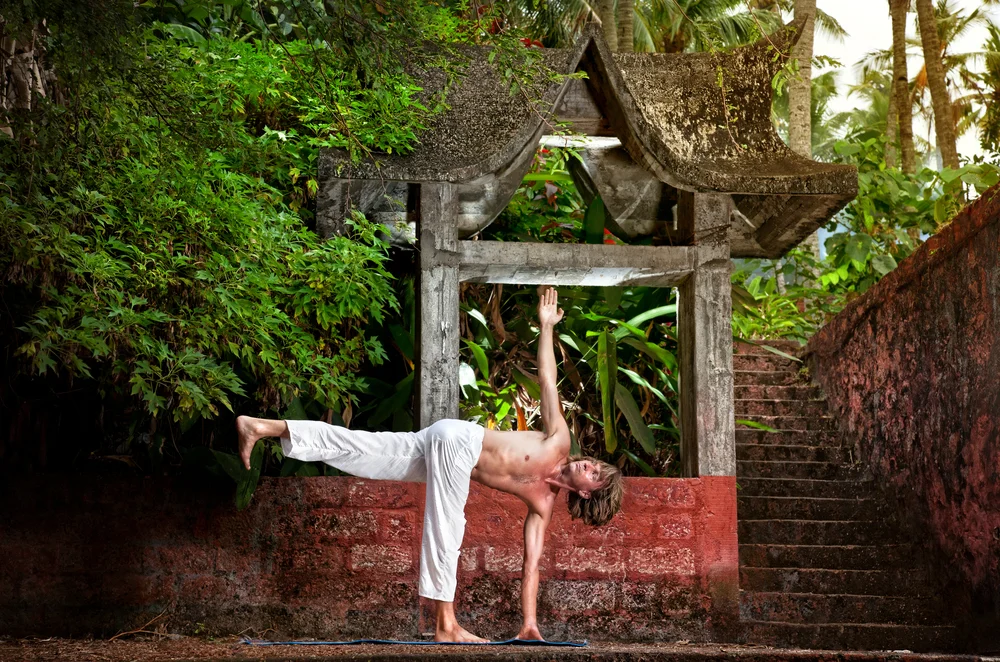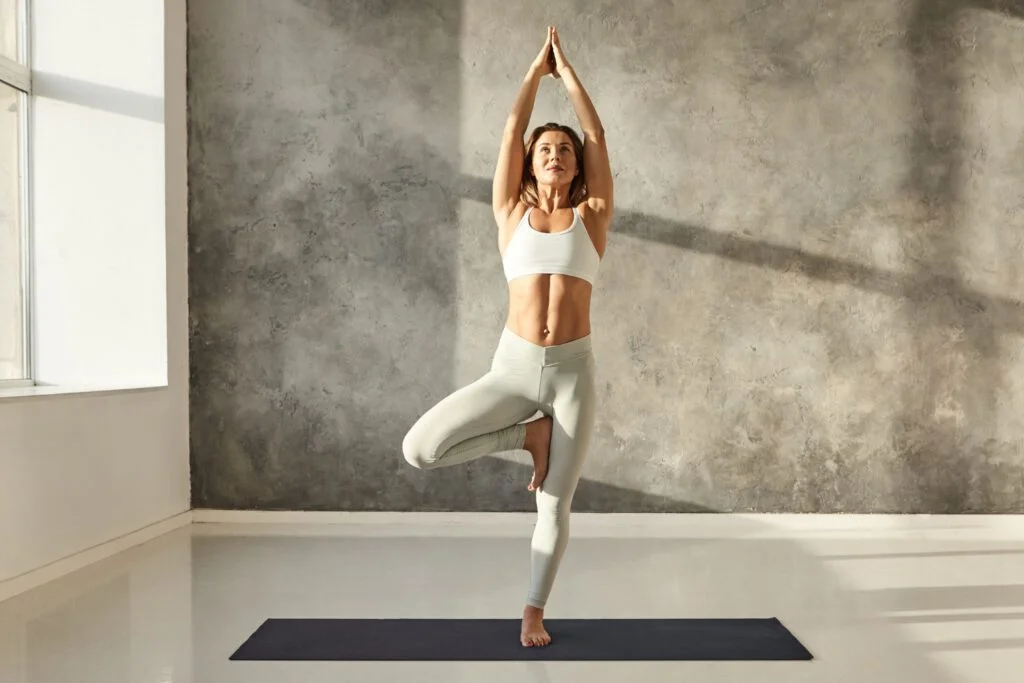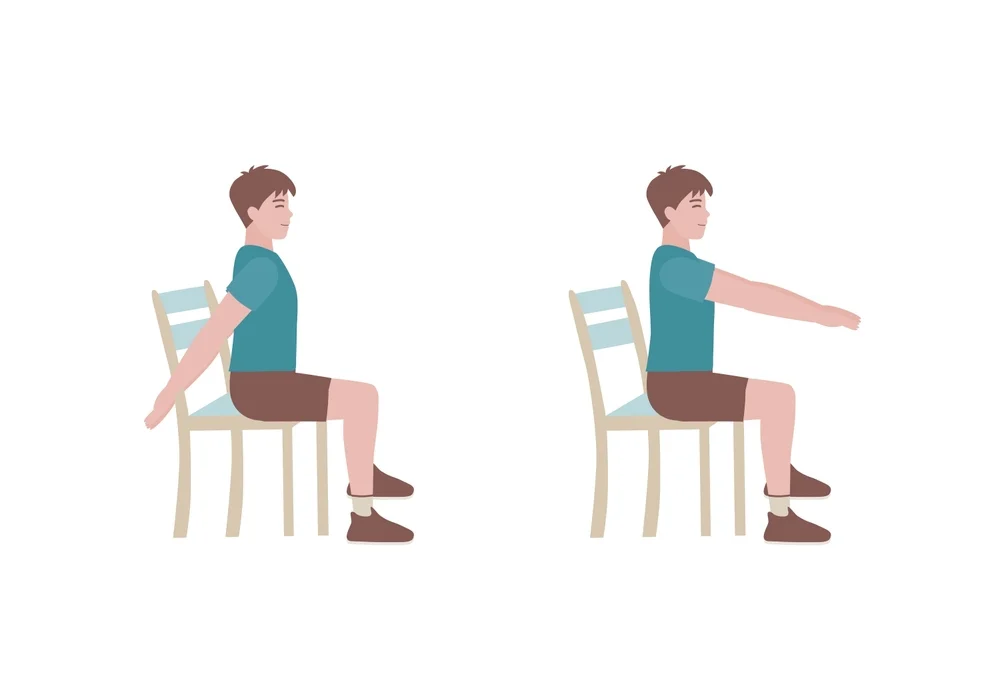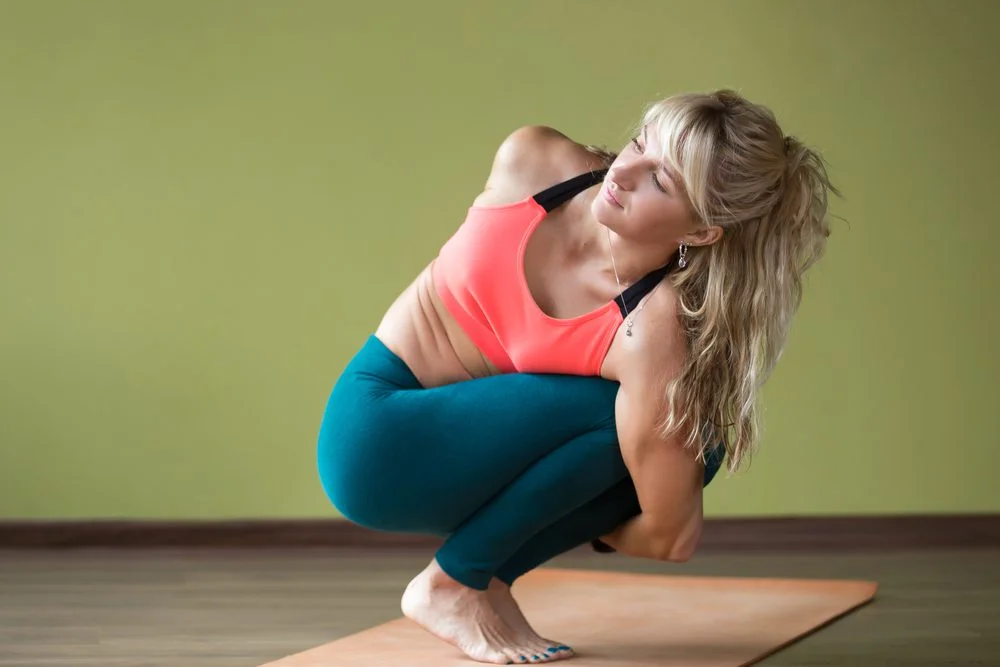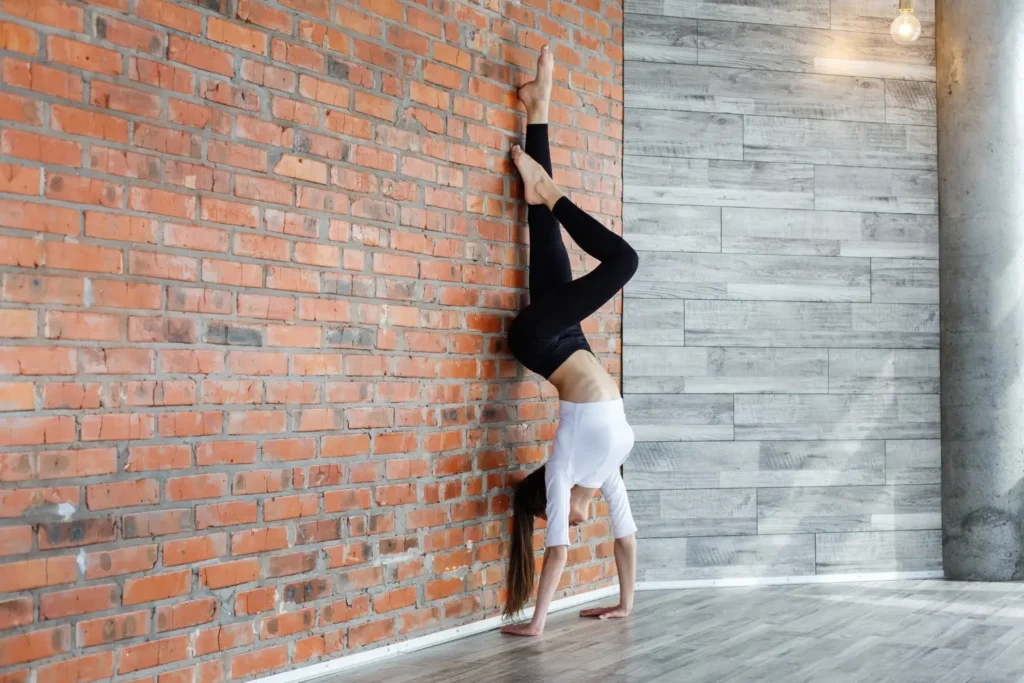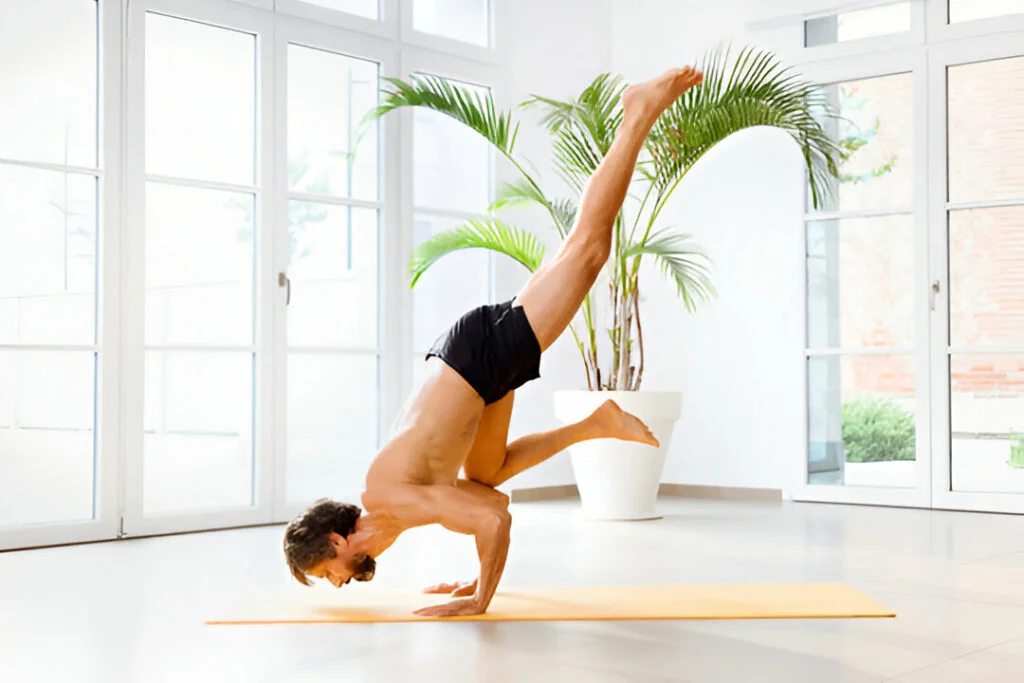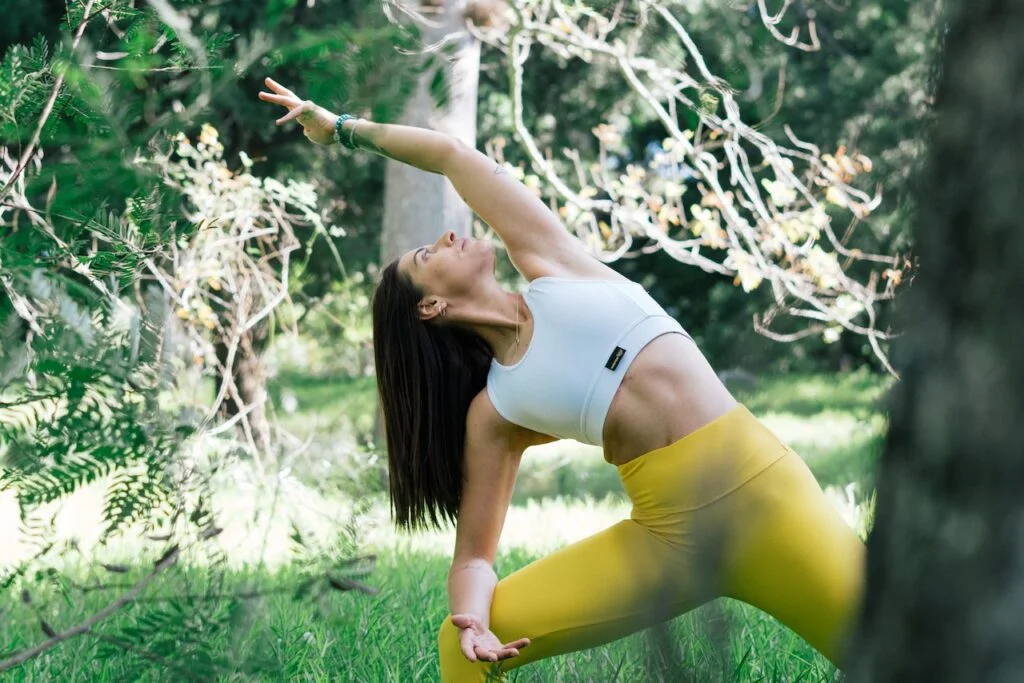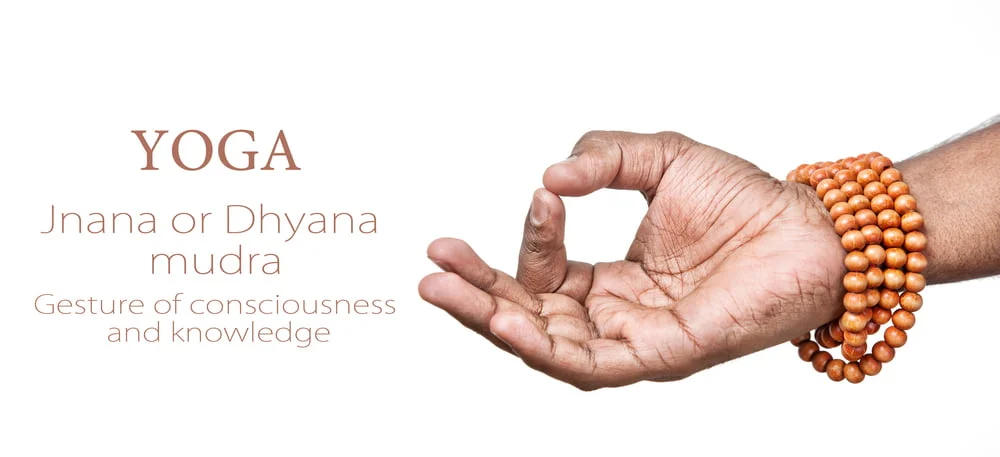The Revolved Half Moon Yoga Pose, also known as Parivrtta Ardha Chandrasana in Sanskrit, is a challenging and dynamic standing posture that combines balance, strength, and flexibility. This pose requires the practitioner to balance on one leg while extending and twisting the torso, creating a beautiful and harmonious shape that resembles the half-moon.
As a variation of the traditional Half Moon pose, the Revolved Half Moon offers an added level of complexity by incorporating a deep spinal twist, engaging the core muscles, and improving overall body awareness and control. This pose is not only physically demanding but also mentally stimulating, promoting focus, concentration, and a sense of calmness.
Whether you are a beginner or an advanced yogi, practicing Revolved Half Moon can have numerous benefits for your body, mind, and overall well-being.
Benefits of Revolved Half Moon Yoga Pose.
1. Improved balance and stability.
This pose requires a strong sense of balance as you balance on one leg while keeping the body aligned and steady. Regular practice of this pose helps to improve proprioception, coordination, and stability, both physically and mentally.
2. Increased core strength.
Revolved Half Moon Yoga Pose engages the deep core muscles, including the obliques and transverse abdominis. As you twist the torso and extend the leg, the core muscles work to maintain stability and control, ultimately strengthening the entire core region.
3. Enhanced spinal flexibility.
The twisting motion involved in this pose helps to release tension and increase flexibility in the spine. It stretches and elongates the spinal muscles, promoting a healthy range of motion and improving overall spinal health.
4. Improved digestion and detoxification.
Revolved Half Moon Yoga Pose stimulates the abdominal organs, including the liver, kidneys, and intestines. This gentle compression helps to massage and tone these organs, promoting healthy digestion, detoxification, and elimination.
5. Increased hip and leg strength.
The standing leg in this pose receives a wonderful strengthening effect, particularly targeting the muscles of the hip, thigh, and calf. Regular practice helps to build strength in these areas, improving stability, alignment, and overall lower body strength.
6. Enhanced focus and concentration.
As Revolved Half Moon Yoga Pose requires a high level of concentration to maintain balance and alignment, it helps to cultivate mental focus and clarity. The mind becomes fully present in the pose, allowing for a deep sense of mindfulness and improved mental awareness.
7. Stress relief and emotional balance.
This pose helps to release physical and mental tension, promoting a sense of relaxation and calm. The twisting action also stimulates the energy centers of the body, helping to balance emotions and reduce stress, anxiety, and fatigue.
8. Improved posture and body awareness.
Regular practice of Revolved Half Moon Yoga Pose helps to improve posture by strengthening the muscles that support proper alignment. It also enhances body awareness, allowing you to connect deeply with your body and make conscious adjustments to maintain optimal form.
| 💡 Tips Verywel Fit.com Incorporating Revolved Half Moon Yoga Pose into your yoga practice can bring about profound physical, mental, and emotional benefits. As with any yoga pose, it is important to practice with proper alignment, listen to your body, and seek guidance from a qualified yoga instructor if needed. With consistent practice, this pose can become a powerful tool for self-discovery, growth, and overall well-being. |
How to do Revolved Half Moon Yoga Pose?
To successfully execute the Revolved Half Moon Yoga Pose, follow these steps:
1. Begin in a standing position at the front of your mat, with your feet hip-width apart. Engage your core and establish a solid foundation by rooting down through all four corners of your feet.
2. Shift your weight onto your left foot while slowly lifting your right foot off the ground. Keep your right leg straight and strong, maintaining a slight bend in your left knee.
3. With a straight spine, hinge forward from your hips as you simultaneously extend your right leg straight behind you. Aim to create a straight line from the crown of your head to your right heel.
4. Place your right hand on the ground or a yoga block, positioned slightly in front of your left foot. Ensure that your right hand is directly beneath your right shoulder, maintaining a strong connection with the earth.
5. As you feel stable, begin to rotate your torso to the left, opening your chest towards the ceiling. Simultaneously, extend your left arm upwards, aligning it with your shoulder. Your gaze can either be directed towards your left hand or towards the ground for added stability.
6. Engage your core muscles by drawing your belly button towards your spine. This will help you maintain balance and stability throughout the pose.
7. To deepen the stretch and enhance the twist, consider bending your left knee slightly and gently pressing your right foot into an imaginary wall behind you. This action will create more space in your torso and increase the rotation of your upper body.
8. Hold the Revolved Half Moon Yoga Pose for several breaths, aiming for stability, and finding your edge while maintaining ease in the posture. Remember to breathe deeply and evenly throughout the pose, allowing your breath to provide a sense of calm and focus.
9. To release the pose, slowly lower your left hand to the ground or yoga block, taking care to maintain your balance. Then, lower your right leg back to the starting position, returning to a standing position with your feet hip-width apart.
10. Repeat the Revolved Half Moon Yoga Pose on the opposite side, starting by shifting your weight onto your right foot and extending your left leg behind you.
| 💡 Tips Verywel Fit.com As with any yoga pose, it is crucial to listen to your body and modify as necessary. Remember that consistency and practice are key to improving in this posture. With time, patience, and dedication, you will find yourself mastering the Revolved Half Moon Yoga Pose, reaping its many benefits and experiencing a sense of grace and strength. |
Revolved Half Moon Yoga Pose Variations.
Revolved Half Moon Yoga Pose Variations are a series of dynamic and challenging postures that enhance strength, flexibility, balance, and focus. These variations build upon the foundation of the traditional Half Moon Pose, adding an exciting twist to take your practice to new heights.
1. Revolved Half Moon with Bound Hands.
In this variation, you start in a traditional Half Moon Pose, with one hand on the floor and the other lifted towards the sky. However, you take it a step further by binding your lifted hand behind your back. This deepens the twist and opens up the shoulders and chest, while also testing your balance and core stability.
2. Revolved Half Moon with Extended Leg.
This variation involves extending the lifted leg straight behind you instead of keeping it bent at the knee. This requires greater hamstring flexibility and challenges your hip stability and strength. It also deepens the twist and intensifies the stretch throughout the entire body.
3. Revolved Half Moon with Eagle Wrap.
In this variation, you bring your lifted leg across your body and wrap it around your standing leg, similar to the Eagle Pose. This binding creates a unique challenge as it compresses the hips and intensifies the twist. It also enhances your focus and concentration as you find balance and stability in this complex posture.
4. Revolved Half Moon with Hand-to-Big-Toe.
This variation involves lifting your top leg and extending it out to the side, while simultaneously grabbing hold of the big toe with your fingers. This deepens the stretch in the hamstrings and outer hips, while also challenging your balance and core strength. It requires focus and control to maintain the pose while holding onto the extended leg.
5. Revolved Half Moon with Half Lotus.
For advanced practitioners, this variation incorporates a half-lotus position with the lifted leg. As you lift your leg, you bring it into a half-lotus, crossing your ankle over your opposite thigh. This variation requires significant hip flexibility and tests your balance and stability even further. It deepens the twist and opens up the hips and groin area.
| 💡 Tips Verywel Fit.com These variations of the Revolved Half Moon Yoga Pose bring innovation and excitement to your yoga practice. They offer a range of challenges suitable for practitioners of different levels, allowing you to explore your body’s capabilities and take your practice to new heights. Remember to always approach these variations mindfully, respecting your body’s limits and listening to its needs. |
Bottom Line.
The Revolved Half Moon Yoga Pose offers a myriad of benefits for both the mind and body. This challenging pose helps to improve balance, flexibility, and strength, while also stimulating the digestive system and increasing overall energy levels. By encouraging focus and concentration, it also aids in calming the mind and reducing stress. As with any yoga pose, it is important to listen to your body and practice with proper alignment and technique. With regular practice and patience, the Revolved Half Moon Yoga Pose can bring about a sense of harmony and well-being, leaving you feeling grounded and revitalized.
How we reviewed this article:
Our team of experts is always monitoring the health and wellness field, ensuring that our articles are updated promptly as new information emerges. See Our Editorial Process
May 13, 2025
Written By: Patrick Franco
Reviewed By: Anirudh Gupta
Written By: Patrick Franco
Reviewed By: Anirudh Gupta

 Workout
Workout
 Meditation
Meditation





 Contact Us
Contact Us

